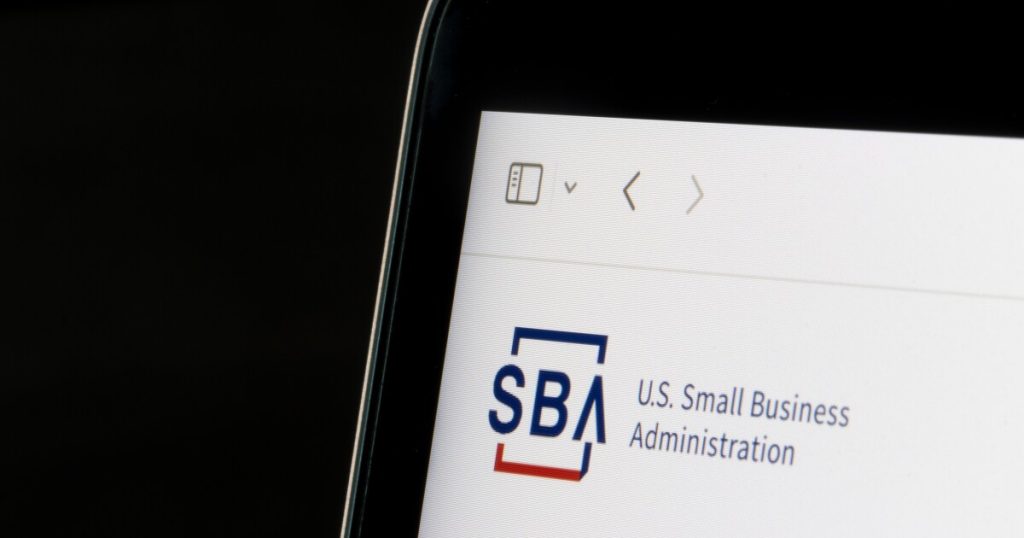Adobe Stock
Activity in the Small Business Administration’s flagship loan guarantee program continues to increase, and loan volumes are expected to approach the program’s $35 billion annual ceiling this year. But the Trump administration appears set to maintain the existing limit for at least one more year.
While advocates for the SBA’s 7(a) program believe the existing funding authority should give them just enough room to maneuver through the remainder of this fiscal year and the following one, room under the ceiling is shrinking steadily. The 7(a) program was forced to
The level of approved loans, which currently sits at $26.3 billion, is likely to approach $35 billion on or before the Sept. 30 end of fiscal 2025, according to Tony Wilkinson, president and CEO of the National Association of Government Guaranteed Lenders, a trade group representing SBA lenders.
However, SBA Administrator Kelly Loeffler possesses the authority to increase the funding authority by 15% to prevent a program stoppage.
“Would we rather have a $38 billion to $40 billion authorization level for FY 2026? Yes,” Wilkinson told American Banker. “But we would likely be OK with the $35 billion level that could be increased to $40.25 billion.”
Funding authority for 7(a) has been set at $35 billion since fiscal 2023. President Donald Trump’s fiscal 2026 budget would continue that same level of funding.
Under the 7(a) program, the SBA guarantees small-business loans made by banks, credit unions and other private sector lenders.
The program’s all-time record for loan approvals was $36.5 billion in fiscal 2021, but that result was driven by a number of temporary incentives designed to boost lending amid the COVID-19 pandemic. Without the incentives, 7(a) approvals dropped to $24 billion in fiscal 2022.
Since then, though, activity has increased steadily. It reached $29 billion in fiscal 2024.

The growth trend has continued into 2025. Approvals during Trump’s first 100 days in office were up 20% from President Joe Biden’s final 100 days, Loeffler said in June 4 testimony before the House Small Business Committee.
“Demand for capital is up, businesses are growing, and confidence is rising across the country,” Loeffler told lawmakers.
“We are on pace for a non-stimulus record year,” Wilkinson said.
And a potential economic downturn may not alter the trajectory much, since banks have traditionally turned to 7(a) and other SBA programs as a safety net to pursue deals they would be uncomfortable underwriting as conventional loans.
The SBA recently took steps to toughen its underwriting standards — a move that could serve to dampen loan demand. On the other hand,

Phoenix Lender Services
A $10 million limit on manufacturing loans would logically chew up more of the program’s funding authority, according to Chris Hurn, president and CEO of Phoenix Lender Services, a subsidiary of the $236 million-asset Community Bankshares in LaGrange, Georgia. “We’ll get closer to $35 billion this year and certainly next year,” he told American Banker.
The underwriting changes, which took effect this month, were part of a series of reforms that included a
With the 7(a) program on sounder financial footing, it’s easier to contemplate an expansion, either in the form of additional funding authority, or by bumping the maximum loan size to $10 million for all loans, not just manufacturing loans, Hurn said. He added that support for such a move is growing among SBA lenders. The existing $5 million limit has been in place since 2010.
“We’ve had to turn away business acquisition deals, commercial real estate deals that were in that $5 million to $10 million range, which shouldn’t be the case,” Hurn said. “We’ve had inflation since then.”
Not every SBA lender is convinced that a funding authority increase is necessary, at least in the near term. Nimi Natan, president and CEO of Gulf Coast Small Business Lending, said economic uncertainty and continued high interest rates have combined to depress demand for commercial-and-industrial and commercial real estate loans.
“I don’t see why SBA, a subset of those markets, should be growing at a faster rate,” Natan told American Banker. Gulf Coast is a unit of the $3.4 billion-asset Gulf Coast Bank & Trust in New Orleans.
Still, Natan echoed Hurn’s call for a higher 7(a) maximum loan size. “I would like to see pegging the maximum size of the loan to inflation to bring it to around $10 million, at least for industries that are crucial for the well-being of our country,” he said.
An SBA spokesperson had not responded at deadline to a request for comment on the adequacy of the $35 billion funding ceiling.
